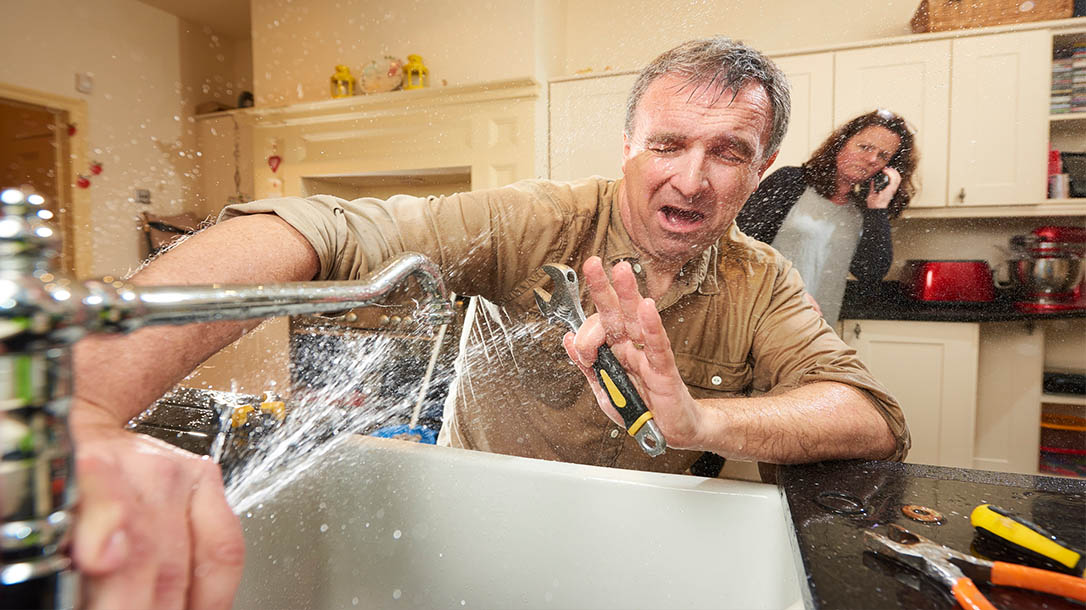Understanding the Significance of Dealing with a Leaking Faucet
Understanding the Significance of Dealing with a Leaking Faucet
Blog Article
What are your ideas about How to Fix a Dripping or Leaky Faucet ?

Dripping faucets might look like a minor hassle, yet their influence goes beyond simply the annoyance of the noise. From drainage to incurring unneeded economic expenses and health threats, neglecting a dripping tap can cause different repercussions. In this post, we'll delve into why it's essential to resolve this typical home issue without delay and successfully.
Wastefulness of Water
Environmental Impact
Leaking taps contribute considerably to water wastefulness. According to the Epa (EPA), a single tap leaking at one drip per second can lose more than 3,000 gallons of water annually. This not only pressures water resources however also affects ecological communities and wildlife depending on them.
Financial Prices
Boosted Water Costs
Past the environmental impact, trickling taps can inflate water expenses considerably. The built up waste gradually converts right into greater energy costs, which might have been avoided with prompt repair services.
Prospective Residential Property Damages
Moreover, extended trickling can bring about damage to components and surfaces bordering the faucet. Water accumulation can create staining, rust, and also structural concerns if left neglected, resulting in additional repair service expenses.
Health and wellness Problems
Mold and Mold Development
The constant visibility of moisture from a dripping faucet creates an ideal atmosphere for mold and mildew growth. These fungi not only compromise interior air top quality but likewise present wellness threats, particularly for people with breathing problems or allergies.
Waterborne Illness
Stagnant water in trickling taps can end up being a breeding ground for microorganisms and various other virus, raising the risk of waterborne diseases. Contaminants such as Legionella germs flourish in stationary water, possibly leading to serious illnesses when ingested or breathed in.
Do it yourself vs. Professional Repair
Pros and Cons of Do It Yourself Fixing
While some might attempt to take care of a leaking faucet themselves, do it yourself repair work feature their own set of difficulties. Without proper knowledge and tools, do it yourself attempts can worsen the problem or lead to insufficient repair services, lengthening the issue.
Benefits of Employing an Expert Plumber
Working with an expert plumber makes certain that the underlying cause of the dripping faucet is attended to successfully. Plumbings have the proficiency and equipment to detect and repair tap problems efficiently, saving time and reducing the threat of further damages.
Step-by-Step Guide to Taking Care Of a Dripping Tap
Tools Required
Before attempting to take care of a dripping faucet, collect the needed tools, consisting of a flexible wrench, screwdrivers, replacement components (such as washers or cartridges), and plumber's tape.
Usual Faucet Issues and Their Solutions
Recognize the sort of faucet and the certain problem triggering the drip. Common issues include damaged washing machines, rusty valve seats, or malfunctioning O-rings. Describe maker instructions or online tutorials for detailed guidance on repair work.
Preventive Measures
Routine Upkeep Tips
To avoid leaking faucets, do routine upkeep such as cleansing aerators, examining for leaks, and replacing worn-out components quickly. In addition, consider setting up water-saving devices or upgrading to more reliable components.
Importance of Prompt Fixes
Resolving leaking taps as soon as they're seen protects against further water waste and potential damages, eventually conserving both water and money in the future.
Effect On Property Worth
Perception of Well-Maintained Property
Keeping a home in good condition, including addressing maintenance problems like dripping taps, boosts its perceived worth and worth amongst possible purchasers or tenants.
Impact on Resale Value
Properties with properly maintained plumbing components, including taps, command greater resale values in the property market. Dealing with dripping taps can add to a positive impact during building evaluations and negotiations.
Ecological Duty
Individual Payment to Preservation
Taking obligation for repairing dripping faucets lines up with wider initiatives toward water preservation and environmental sustainability. Every individual's actions jointly make a considerable effect on protecting priceless resources.
Sustainable Living Practices
By prioritizing prompt repair work and embracing water-saving behaviors, individuals contribute to sustainable living methods that benefit both existing and future generations.
Final thought
Dealing with a leaking faucet goes beyond simple benefit; it's a necessary step toward preserving water, minimizing economic expenses, and securing wellness and building. Whether via do it yourself fixings or expert support, taking action to repair leaking taps is a small yet impactful way to advertise liable stewardship of sources and contribute to a much healthier, extra sustainable future.
How to Fix a Leaky Faucet: Step-by-Step Repair Guide
A leaky faucet may seem like a simple annoyance, but if it's not fixed promptly, that leak could cost hundreds to potentially thousands. From water damage to mold, mildew, and high water bills, even a tiny leak can be catastrophic if left unattended. Damage like this can even affect the overall value of your home, so it's important to take the right approach for leaky faucet repair. You may need the help of a plumber in some cases, but we've got a few tips you can try on how to fix a leaky faucet before calling the pros.
Four Faucet Types
When you're learning how to fix a leaky faucet, the first step is knowing what kind of faucet you're working with! There are four common types.
Cartridge Faucets
Cartridge faucets come in one- or two-handled varieties. In one-handled cartridge faucets, hot and cold water combines in a single cartridge. In the two-handled versions, hot and cold water are controlled separately and mixed in the faucet.
Ball Faucets
Ball faucets have a single lever you push up and down to adjust the pressure and rotate to change the temperature. A slotted metal ball controls the amount of water allowed into the spout.
Compression Washer Faucets
They're the oldest type of faucet, but they're still used in many homes — especially older ones. Compression faucets have two separate handles that, when turned, raise or lower the washer that seals a water valve. This valve stops water from flowing through the faucet when it is turned off.
Disc Faucets
Disc faucets rarely need to be repaired due to their maintenance-free design. The water flow is controlled by two discs — the upper one raises and lowers against a fixed lower disc, creating a watertight seal. If your disc faucet starts leaking, you may need to replace the seals or clean residue buildup from the inlets.
Fixing a Leaky Faucet
Step 1: Turn Off the Water
Whether you're learning how to fix a leaky bathtub faucet or how to fix a leaky kitchen faucet, always turn off the water supply to your working area when you're fixing a leak. The last thing you want is a flood added to your list of things to fix.
Look for the shutoff valves below your sink or around the tub and turn them clockwise to stop the water flow. If your faucet doesn't have shutoff valves, you may need to turn off the water for the whole house. Check to make sure it's off by turning the faucet on. If nothing comes out, you're ready to start the repair.
Step 2: Take Apart the Faucet
How you disassemble your faucet depends on the type of fixture you have. You can use a flathead screwdriver to remove the caps on top of the handle or handles for cartridge and compression faucets. Inside, you should see handle screws. Unscrew these with a screwdriver to remove the handle.
Disc- and ball-style faucets will typically have an inlet screw near the handle, and removing that will reveal the interior of the faucet.
Detach the Valve Stem
For cartridge- and compression-style faucets, you'll see the inner valve stem or cartridge once you remove the faucet handles. If you have a compression faucet, unscrew the brass valve stem. If you have a cartridge faucet, pull out the cartridge. If your cartridge has been in place for a while, it may require some tools or extra force to remove it due to mineral deposits.
Examine and Replace Parts
Once you've removed the parts, check them out to confirm what needs to be replaced. You may see corroded rubber washers, O-rings, stems, or cartridges. On a ball-style faucet, check the seats and springs for damage.
If you need to repair a leaky disc faucet, check the inlet and seals on the lower disc.
Once you determine what parts must be replaced, visit your local hardware store. Bring the damaged parts with you to ensure you can purchase the correct components to replace them.
Clean Valves and Faucet Cavity
If you've removed a stem or cartridge, you may notice mineral buildup in the faucet's threads. Use white vinegar to clean the valve seat by soaking it for a few minutes, then scrub it away with a soft toothbrush and rinse with warm water. You can also clean the interior of the faucet in the same way.
Reassemble the Faucet
Once your faucet is cleaned and the required parts have been replaced, it's time to reassemble it. Put the pieces back together and slowly turn the water supply back on. Doing this slowly is crucial because too much initial water pressure can damage the new hardware you've just installed.
https://homewarranty.firstam.com/blog/how-to-fix-leaky-faucet

Do you like reading about 4 Common Reasons for a Leaky Faucet? Put a remark further down. We'd be happy to know your views about this entry. In hopes to see you back again before long. Do you know somebody else who is interested in Should I Repair or Replace a Leaky Faucet?? Feel free to promote it. We appreciate your readership.
Report this page